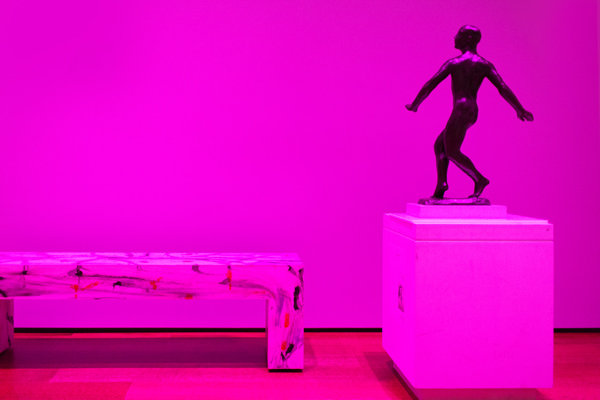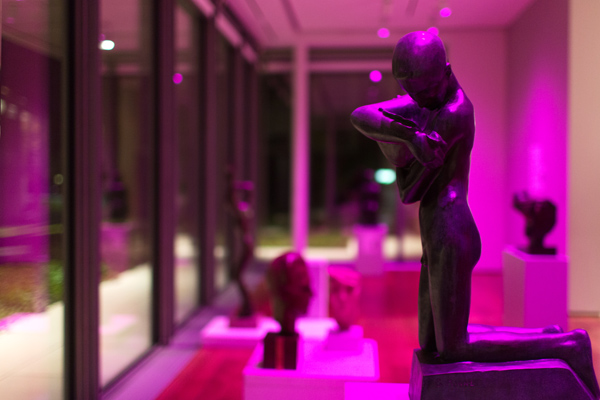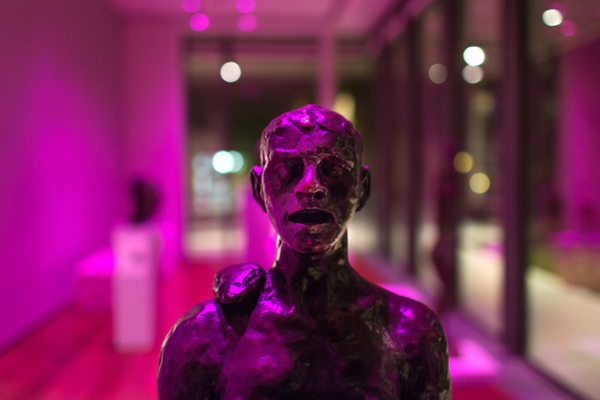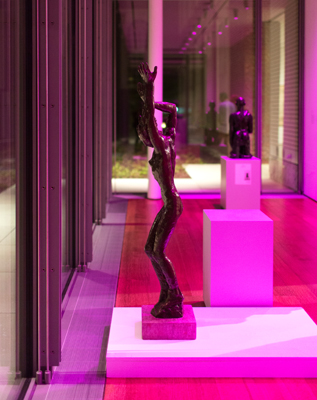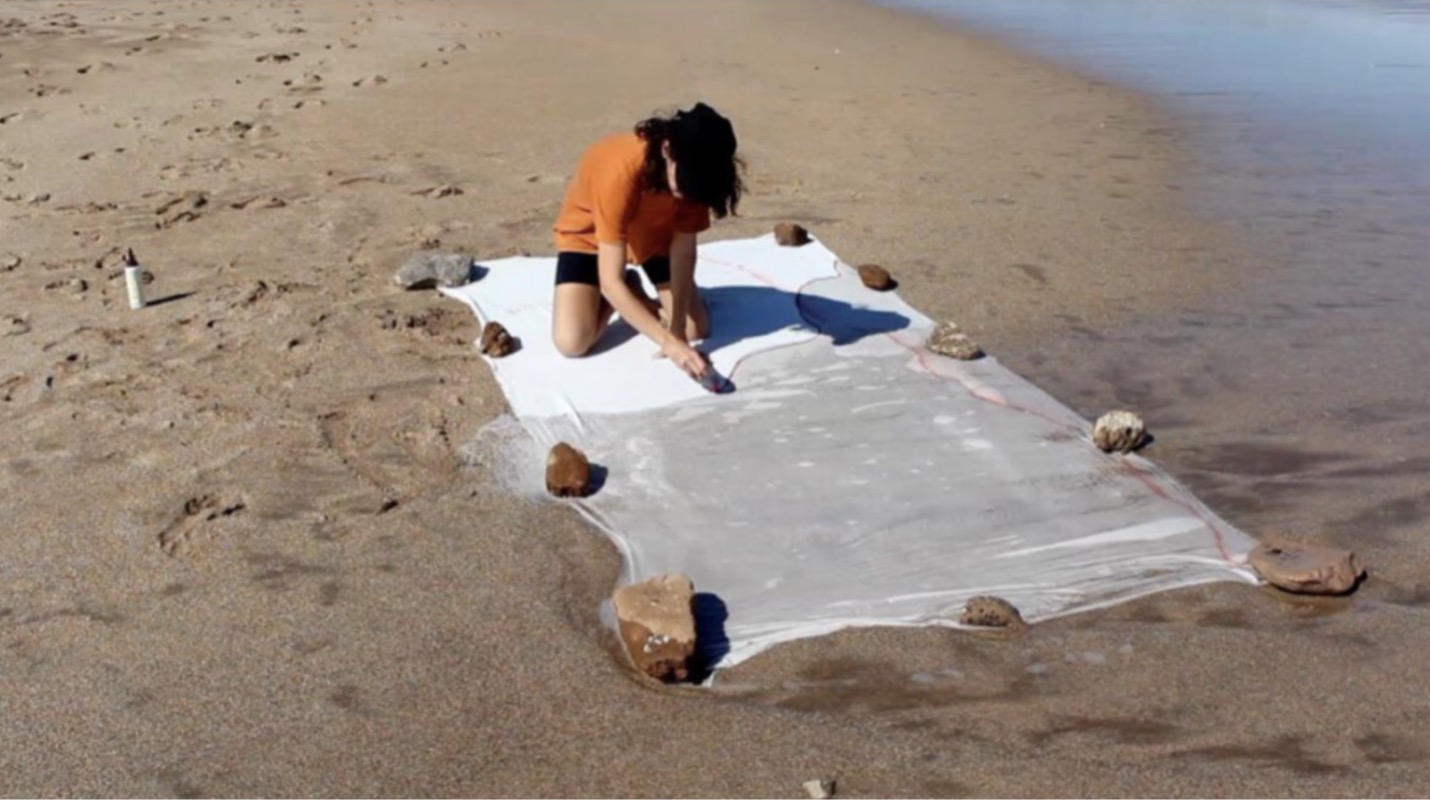Harvard’s Carpenter Center for the Visual Arts (CCVA) recently opened Shahryar Nashat: Skins and Stand-ins, the Berlin-based artist’s first solo exhibition in the United States. It features video, sculpture, architectural interventions, and commissions that disrupt and reframe acts of looking, in order to foreground what is more often uninvited or disregarded.
In conjunction with the show, the Harvard Art Museums invited Nashat to intervene in the Busch-Reisinger Museum’s glass-walled gallery (1510) on Level 1, which looks out toward CCVA.
Lynette Roth, the Daimler-Benz Curator of the Busch-Reisinger Museum, was struck by Nashat’s 2007 intervention at the Lehmbruck Museum in Duisburg, Germany, and through discussions with CCVA director James Voorhies, asked the artist to consider adding works to the Busch-Reisinger gallery.
“Nashat has a demonstrated interest in the museum as a site of inquiry and intervention, which made his work an ideal point of intersection for this CCVA and Harvard Art Museums collaboration,” said Roth. “His intervention in the Busch-Reisinger Museum’s gallery of 20th-century expressionist and symbolist sculpture is especially poignant given the predominance of figurative sculpture in the collection.” Voorhies added: “I’ve known Nashat’s work for many years and am delighted we have an opportunity to experience his work not only at the Carpenter Center but also through this meaningful and insightful connection with the Harvard Art Museums and their collections.”
Titled Private Practice (2015), Nashat’s intervention adds sculptures from the Harvard Art Museums collections as well as alters the lighting and pedestals, shaking up the previous installation in the gallery. To the four sculptures by Ernst Barlach, Max Beckmann, George Minne, and Renée Sintenis already on display, Nashat has added four portrait sculptures by Georg Kolbe, Wilhelm Lehmbruck, Gerhard Marcks, and Sintenis, plus one of his own sculpture-benches, Repose on Display (2015), commissioned by CCVA and the Harvard Art Museums. Visitors are encouraged to sit on this work, inserting themselves into the installation and becoming both viewer and performer, akin to the surrounding representations of bodies arrayed on pedestals and plinths. In contrast to nearby galleries, the figurative sculptures have been placed atop pedestals that are raw, chipped, and have the artist’s own labels taped to them, and newly installed magenta lighting bathes the gallery in an atypical hue, reflecting off the sculptures’ metal surfaces. As a special touch, for the duration of the installation, these lights will be left on past regular hours, so passersby will be able to view the intervention from outside.
The exhibition at the Carpenter Center is on view through January 10, 2016, and the installation at the Harvard Art Museums is on view through January 10, 2016.
The installation at the Harvard Art Museums is supported by the Charles L. Kuhn Endowment Fund. Modern and contemporary art programs at the Harvard Art Museums are made possible in part by generous support from the Emily Rauh Pulitzer and Joseph Pulitzer, Jr., Fund for Modern and Contemporary Art.

